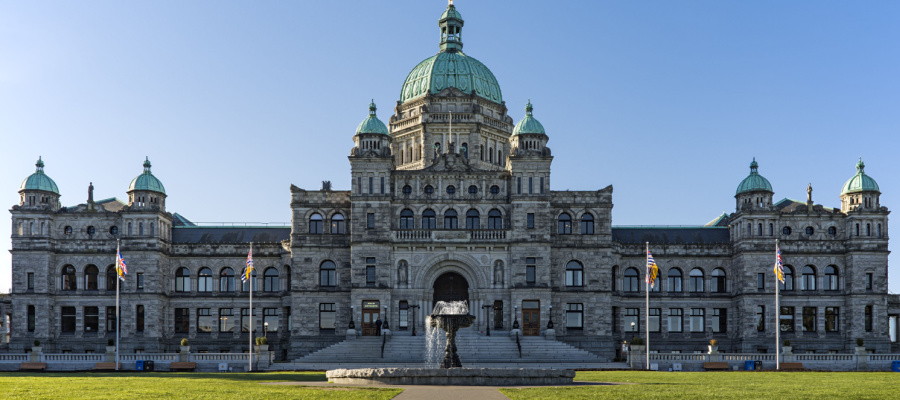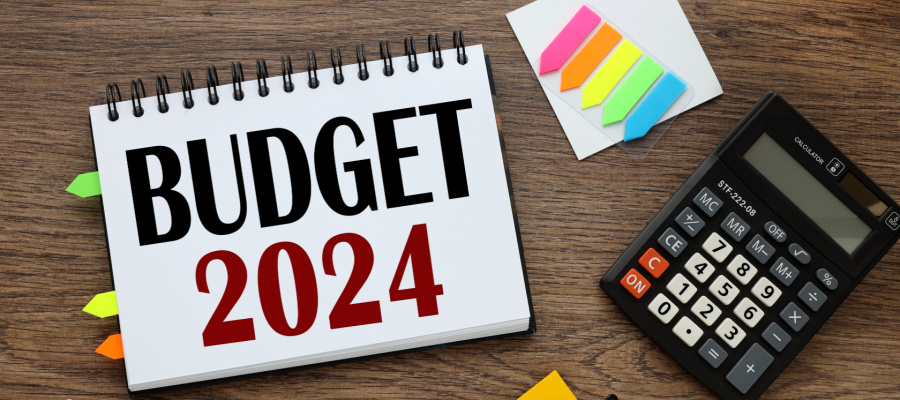Our take on BC Budget 2020

BC Budget 2020 is light on new announcements. It largely marks the final year of implementation of the ambitious three-year plan set out back in 2018 to tackle some of our biggest social and economic challenges head on.
The good news is that it delivers on key commitments made (and even ups the amounts slightly in some areas), maintaining momentum on major three-year investments in child care, housing, poverty reduction, climate action, health and education. As Finance Minister Carole James remarked in her budget speech, “the plan is working.” The bad news is that the budget is overly cautious in calculating the available room to invest and leaves money on the table that should have been spent to make lives better, to tackle poverty and climate change, increase access to the services that people need (including more mental health supports), and to build a stronger and more sustainable economy in the process.
Overcautious fiscal approach: BC can afford to do much more
In this budget, the government is not making full use of the fiscal room BC has to make crucial social and environmental investments. The budget continues BC’s long-running pattern of underestimating the financial resources available, leaving large sums of money on the table that should be put towards badly needed investments in areas like housing, poverty reduction and action to address the climate emergency.
In the fiscal plan presented, each of the next three years includes roughly $1 billion tucked away in surpluses, forecast allowances and general contingency funds (and that’s in addition to other contingency funds for public sector bargaining settlements and the CleanBC climate plan). The budget also assumes that economic growth will be substantially slower than private sector forecasts suggest, meaning that likely levels of revenues available are being further understated.
As discussed in a recent Policy Note analysis, this is part of an intentional plan to build fiscal padding into the budget to ensure that there is always a surplus at all costs. Why is this a problem? When budgets downplay our real fiscal position, ‘surprise’ year-end surpluses are allocated to pay down debt, rather than budgeted for urgent social and environmental priorities.
With interest rates at historic lows, funds put towards critical public investments will almost certainly pay off better in economic terms than a reduction in debt. For example, a dollar of investment in areas such as public transit and child care pays off far more than a dollar in added economic output. As the CCPA’s work has shown, poverty itself needlessly costs BC’s economy billions of dollars per year.
In this budget, the government is not making full use of the fiscal room BC has to make crucial social and environmental investments.
When we prioritize low-return debt reduction over high-return public investment, we are not only missing an opportunity to meet urgent needs, we are also essentially throwing money away.
Notably, overall provincial operating spending as a share of our total economic pie (GDP) has fallen dramatically over the past to decades. If BC dedicated the same share of GDP to public spending as we did in 2000, we’d have an additional $7 billion this year to invest. That decline has largely levelled off under the current government, but it hasn’t been reversed (indeed it’s set to decline slightly over the next few years). In short, this means that while social investments have increased roughly in line with economic growth under this government and budget, we can afford to do much more.
Poverty reduction
Funding the next phase of BC’s first-ever poverty reduction strategy was among CCPA’s top priority recommendations for BC Budget 2020, and it’s an area where the budget largely missed the mark. The introduction of the poverty reduction strategy, TogetherBC, in 2019 laid the groundwork for tackling poverty in BC—a major undertaking that will require sustained increases in investment over a series of budgets. We were particularly disappointed to see no increases in income assistance or disability rates, which remain far below the poverty line.
The newly announced increase in earning exemptions for people receiving social assistance and disability assistance is a welcome change, but is no substitute for raising the rates. Government statistics show that a minority of assistance recipients max out on their earning exemptions—for example only about 4% of people on disability assistance do—suggesting that few people will be actually helped by this new change.
The BC Child Opportunity Benefit, which was the flagship announcement of last year’s budget and of TogetherBC, is reannounced in this budget as it will come into effect in October 2020. This new income-tested child benefit for youth up to 18 will replace the existing BC early childhood tax benefit (which only applied to children under six) and will pay up to $1,600 per year for one child—a considerable increase from the current $660. Families with two children will receive up to $2,600 and those with three, up to $3,400. And while the $1,000 extra benefits for one child is welcome and much needed, the only families who will be lifted out of poverty by this new Child Opportunity Benefit are those that are only $1,000 to $1,500 below the poverty line to begin with.
Budget 2020 includes a few other notable, if small, investments that will help with poverty reduction, including:
- A boost to supports available for children in care, including Indigenous children and youth.
- Slight expansion of the eligibility for Agreements with Young Adults aging out of care.
- Additional funds for Community Living BC.
- Funds to improve access to justice for women, Indigenous people and other marginalized groups (though the budget doesn’t provide sufficient detail on what additional services these will fund).
- Additional funding for some new shelter spaces (though little new funds for permanent affordable housing).
- Additional capital investment for another 200 units of modular supportive housing for people who are homeless or at risk of homelessness, bringing the total up to 2,400 (still far short of the need).
TogetherBC also flagged key areas that have not yet been addressed, including: “better access to good food for families, enhanced investments in affordable transportation, and improved income security, including assistance rates.” Another notable gap is the extremely limited access to dental, optical and other extended health services for low-income people. Budget 2020 should include initiatives to fill these gaps, but did not explicitly include measures to do so.
Climate action doesn’t reflect urgency of the crisis
In terms of climate action, an additional $106 million is being budgeted over three years to help increase the energy efficiency of public facilities such as schools and hospitals, as part of the Carbon Neutral Capital Program. Other new climate investments include funds for a pilot program to electrify inland ferries, as well as moving towards electrifying the fleet of public sector vehicles. Budget 2020 also renews subsidies for the purchase of electric vehicles and investments in charging stations (though it’s important to note that zero emission vehicle rebate programs often end up being a subsidy to affluent consumers who would likely purchase these vehicles anyway).
BC needs to begin investing significantly in the transition away from fossil fuels, rather than expanding this sector of our economy.
Positive moves to address climate change are undermined by the government’s continued focus on LNG development as an economic driver. LNG is one of the crucial reasons the CleanBC plan currently only accounts for approximately 75% of the emissions reductions needed to meet the province’s reduction targets. BC needs to begin investing significantly in the transition away from fossil fuels, rather than expanding this sector of our economy. Amid the unprecedented global emergency we face in climate change, all governments must begin taking action on a scale that reflects the urgency of the climate crisis.
Housing investments continue, but much more needed
Housing investments are ramping up as planned in the past two BC budgets, and Budget 2020 does make some modest new commitments on top of those prior plans, reaching a total of $1.4 billion of combined capital and operating funding in 2020/21. New additions include $56 million to fund 200 new units of modular housing to address the homelessness crisis, as well as $50 million over three years towards more support services for people experiencing homelessness.
To begin truly getting a handle on the housing crisis, we have recommended building 10,000 units of new publicly funded, non-market affordable housing every year in Metro Vancouver alone.
However, as the number of people experiencing homelessness reaches new records, housing prices remain high, vacancy rates are stubbornly low and rents continue to rise, much more action is needed. To begin truly getting a handle on the housing crisis, we have recommended building 10,000 units of new publicly funded, non-market affordable housing every year in Metro Vancouver alone. BC is wealthy enough to afford this level of investment—as is often overlooked—and this type of investment in non-market housing largely pays for itself through rental income generated over the life these projects.
New BC Access Grant for students
BC Budget 2020 introduced a new needs-based student grant program effective this September. The BC Access Grant will provide up to $4,000 to lower-income students pursuing post-secondary education, including students in part-time programs and programs shorter than four years that are not eligible for the Canada Access Grant. This is great news for students and will make it slightly easier to pursue post-secondary education.
Good news: new top tax bracket for the one per cent
Budget 2020 brings some good news on the issues of inequality and tax fairness.
The budget introduces a new top tax rate of 20.5 per cent on the richest British Columbians, those with incomes over $220,000. According to the government’s estimate, this will add $216 million to the provincial budget in the upcoming fiscal year. This opens more potential fiscal space for much-needed public investments, while representing an additional measure to reduce the extreme levels of inequality in this province.
At a time of extreme inequality, there is still substantially more room to tax the rich to improve tax fairness and help fund the services and infrastructure we need
BC has among the lowest personal income taxes in the country for those earning below $140,000 per year. Even with the added tax bracket, the highest income earners continue to have lower personal tax rates than their counterparts in most other provinces. Indeed, our combined provincial and federal income tax rates remain far lower than the revenue-maximizing top tax rates recommended by economists like Thomas Piketty and Emmanuel Saez. At a time of extreme inequality, there is still substantially more room to tax the rich to improve tax fairness and help fund the services and infrastructure we need. Equally important, there is room to go further in taxing corporations and the wealthiest landowners.
Following the recommendation of recent expert reports, including the MSP Task Force, the budget also eliminated the PST exemption for sweetened beverages like soft drinks. This is meant to discourage the consumption of sugary drinks and will add $27 million to the provincial budget in revenue this year.
Child care
We’re now in year three of this government’s milestone investment of $1 billion over three years to lay the foundation of a new universal, affordable, high-quality child care system. Thousands of BC families have already seen their out-of-pocket child care costs decrease as a result of the new child care fee reduction initiative and Affordable Child Care Benefit. The BC government converted 2,500 child care spaces into prototype projects charging parents only $200/month or $10/day, with the fee waived for families with income below $51,000.
We know that investing in a universal, affordable, quality child care system in BC is a smart use of public resources that will benefit the economy by enabling more parents to work.
Budget 2020 notes that BC has funded 10,400 out of the promised 22,000 new child care spaces, and commits to fund the rest this year (though it’s not clear whether this target will be met). It’s concerning that child care funding is projected to grow by only 1% per year in 2021 and 2022, hardly the kind of increases that will take us to an affordable child care system so it will be important to watch next year’s budget.
We know that investing in a universal, affordable, quality child care system in BC is a smart use of public resources that will benefit the economy by enabling more parents to work. However, these benefits will only fully materialize after a significant expansion of licensed, quality child care spaces so that all families can access the services they need. After all, the new affordability measures don’t mean much for families whose children remain on long wait lists or for those who have to drive long distances from home and work to get to the only available spot in town.
We continue to call for a capital funding allocation for child care so that BC can invest in publicly owned child care facilities instead of simply making capital grants to providers. This would recognize child care facilities as a crucial part of social infrastructure—similar to schools—and the BC government can and should play a bigger role in creating new spaces.
Health care
A number of big steps have been taken to improve public health care in BC over the past three years but there is still more to do. It’s great to see strong funding commitments to support health care services, slightly boosted from last year’s budget. New infrastructure spending will increase capacity and improve health care delivery and should be accompanied by stronger investment in a robust health care human resource strategy to train the health care workers that BC will need in the coming years. Unfortunately, there doesn’t appear to be any new investment to boost mental health initiatives or additional measures to address the fentanyl crisis, which continues to claim too many lives.
Continuing to boost public infrastructure investment
The BC government is making significant increases in capital investment, an increase of 36% since last year, on top of an 18% increase last year and 13% in 2018. This compares to much smaller, single digit, annual increases prior to that. As in other areas, we are seeing the implementation of the government’s original three-year plan and little in new initiatives.
It is great to see a marked reduction of new P3 commitments for important public infrastructure projects—including hospitals, residential care facilities and schools— and curbing the often-criticized practice that unnecessarily increases costs. The use of wasteful P3s should be discontinued completely.
Support for hard-hit forestry communities
The BC government had already announced some new programs to support forestry workers affected by mill closures, including training programs and income support provided to families, including early retirement bridges for affected workers and some support to forestry contractors. Looking forward, there is a commitment of $13 million over three years to revitalize the forestry sector, including through better inventory mapping and improved forest management planning and stewardship, for which we have long advocated.
Education
BC Budget 2020 includes modest increases for education budgets but there is more work to do to fill the gaps left after over a decade of underinvestment by the previous government. For example, the recent increases to public school funding are largely going towards hiring enough teachers to meet court requirements for reduced class sizes and handle student enrollment increases. This is a welcome development but additional funding is urgently need to ensure that students with learning disabilities and special needs receive the supports they need to thrive in school. Mental health supports for school-aged children is another area in need of additional attention. The throne speech promised additional funding for schools to support children and youth in care, children with mental-health challenges and children from low-income families, but the budget did not include specific details.
One piece of good news on the education front is renewed commitments to fast-track seismic upgrades of schools, building new schools with dedicated child care space inside them, with a large capital allocation for the K-12 sector this year.
BC Budget 2020 includes modest increases for education budgets but there is more work to do to fill the gaps left after over a decade of underinvestment by the previous government.
Funding for post-secondary institutions also went up modestly to accommodate increased enrollments and fulfill previously announced commitments to expand STEM programming. However, provincial operating grants continue to fall far short of actual costs, forcing public institutions to increase their reliance on tuition fees (including from international students who can be charged more). Previously announced investments in post-secondary education facilities and student housing are also going ahead.
We have been calling on the BC government to extend eligibility for tuition fee waivers for youth aging out of the foster care system to age 30 (from the current age limit of 26) but this wasn’t specifically included in the budget (though it could be put in place as it would not be a particularly expensive initiative).
Topics: Economy, Environment, resources & sustainability, Health care, Housing & homelessness, Poverty, inequality & welfare, Provincial budget & finance, Taxes


